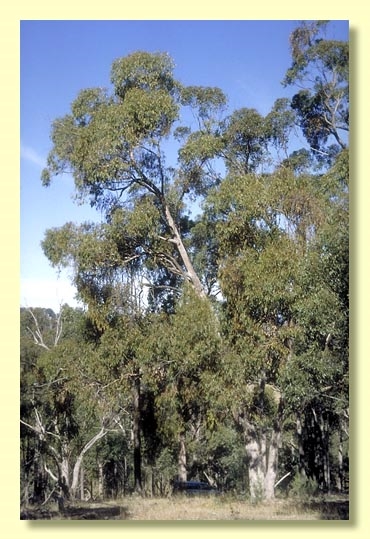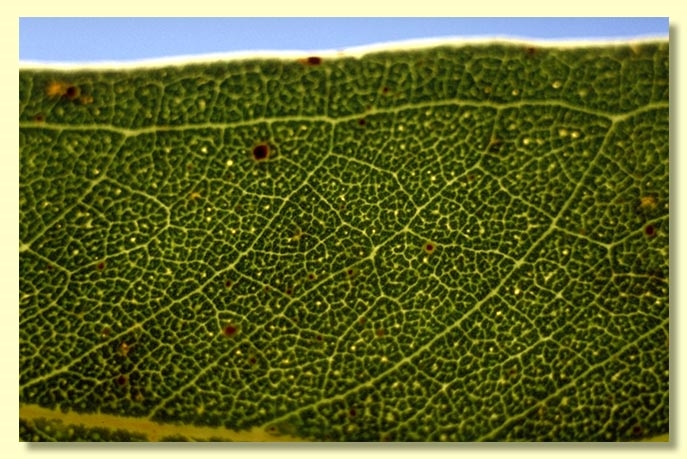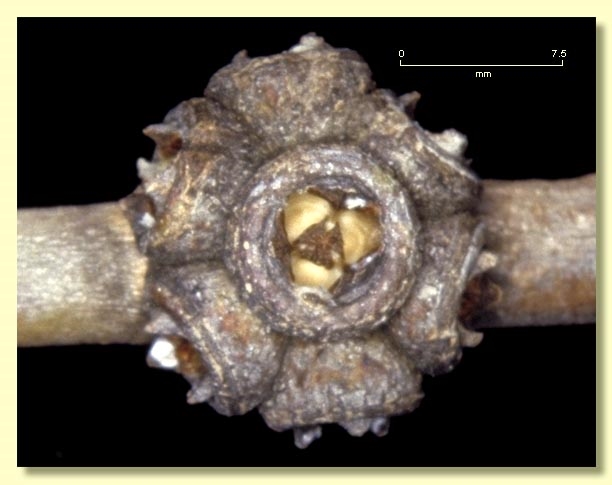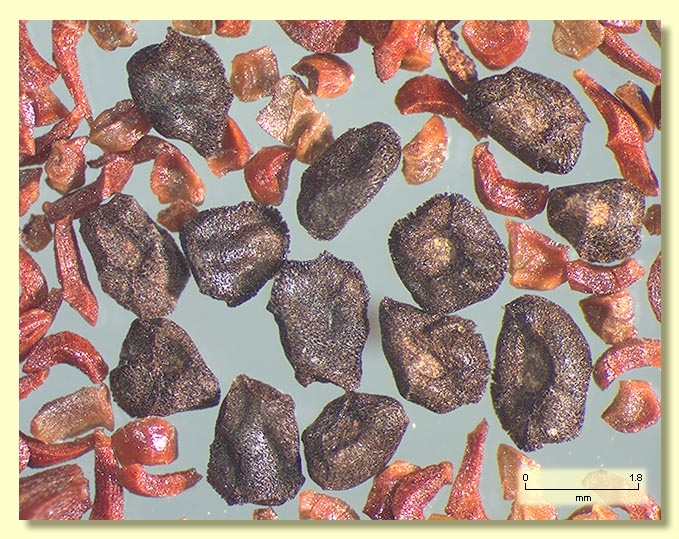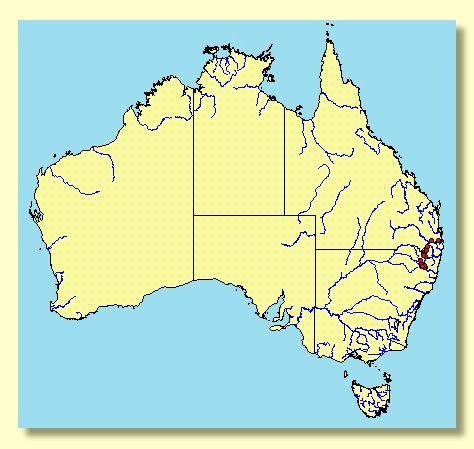Euclid - Online edition
Eucalyptus banksii
Eucalyptus | Symphyomyrtus | Maidenaria | Euryotae | Globulares | Remanentes
T: Wallangarra, NSW, 2 Aug. 1904, J.L.Boorman s.n.; lecto: NSW, fide J.H.Maiden, Crit. Revis. Eucalyptus 3: 79 (1915).
Bark rough on trunk and larger branches, fibrous or box-like, flaky, grey or grey-brown, smooth branches yellow.
Juvenile growth (coppice or field seedlings to 50 cm): stem square in cross-section initially but becoming rounded, younger stems glaucous, warty; juvenile leaves opposite and sessile for many pairs, orbicular to ovate or cordate, 3.5–8.5 cm long, 3–6.5 cm wide, base amplexicaul, truncate or rounded, margin entire or subcrenulate, glaucous at first but later juvenile leaves becoming glossy, green above.
Adult leaves alternate, petiole 1.8–4 cm long; blade lanceolate to falcate, 10–19 cm long, 1.5–3 cm wide, base tapering to petiole, concolorous, glossy, green, side-veins greater than 45° to midrib, densely to very densely reticulate, intramarginal vein parallel to and well-removed from margin, oil glands intersectional or obscure.
Inflorescence axillary unbranched, sessile or peduncles to 0.5 cm long, buds 7 per umbel, sessile. Mature buds oblong, ovoid or globular, 0.4–0.7 cm long, 0.4–0.5 cm wide, green, smooth, with 2 slight longitudinal angles, scar present, operculum conical to rounded, stamens irregularly flexed, anthers cuboid or cuneate, versatile, dorsifixed, dehiscing by longitudinal slits (non-confluent), style long, stigma blunt, locules 3 or 4, the placentae each with 4 vertical ovule rows. Flowers white.
Fruit sessile, hemispherical, cup-shaped or obconical, 0.3–0.6 cm long, 0.6–1.1 cm wide, angled longitudinally, disc level, valves 3 or 4, strongly exserted.
Seeds black, 2–3 mm long, ovoid or flattened-ovoid, dorsal surface smooth, hilum ventral.
Cultivated seedlings (measured at ca node 10): cotyledons bilobed to oblong; stems square in cross-section, glaucous, warty; leaves sessile and opposite for at least 17 nodes, orbicular to cordate, 4–6.5 cm long, 5–6.5 cm wide, amplexicaul, margin subcrenulate or entire, glaucous.
Flowering has been recorded in March, June and September.
A rare tree or mallee with firm box bark, found near Armidale on the Northern Tablelands of New South Wales, extending to the Lamington Plateau in south-eastern Queensland. It occurs on granite, basalt and porphyry hills at higher altitude. Eucalyptus banksii has rough bark over the whole trunk with branchlets conspicuously smooth yellow. In habit and bark it may resemble E. goniocalyx from which it is distinguished by the juvenile leaves, which are large, round and glaucous at first but soon becoming glossy green and pointed, and by the completely sessile, smaller rounded buds and small tightly clustered fruits. The peduncles of E. banksii are very short and thick.
Eucalyptus banksii belongs in Eucalyptus subgenus Symphyomyrtus section Maidenaria, a large group of species more or less restricted to south-eastern Australia, characterised by bilobed cotyledons, simple axillary inflorescences, buds with two opercula, stamens with versatile anthers and flattened seeds with a ventral hilum. Within this section, E. banksii belongs in subsection Euryotae series Globulares subseries Remanentes, having sessile, juvenile leaves opposite for many pairs on the stems, small buds in clusters of seven and small fruit.

